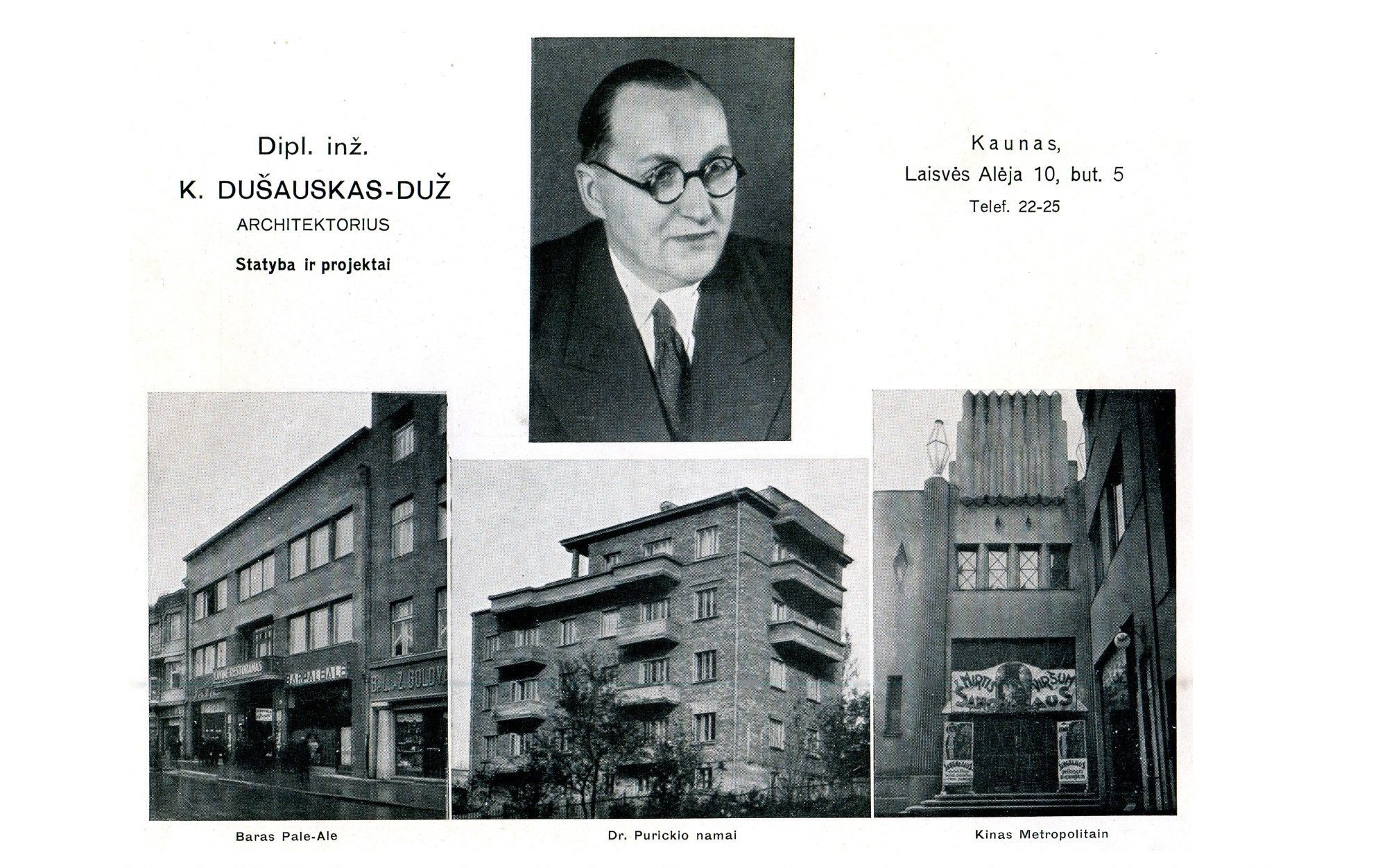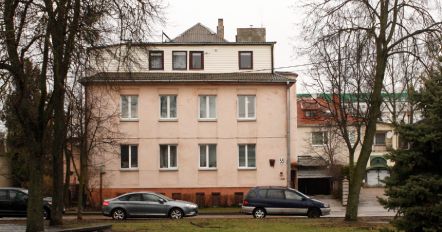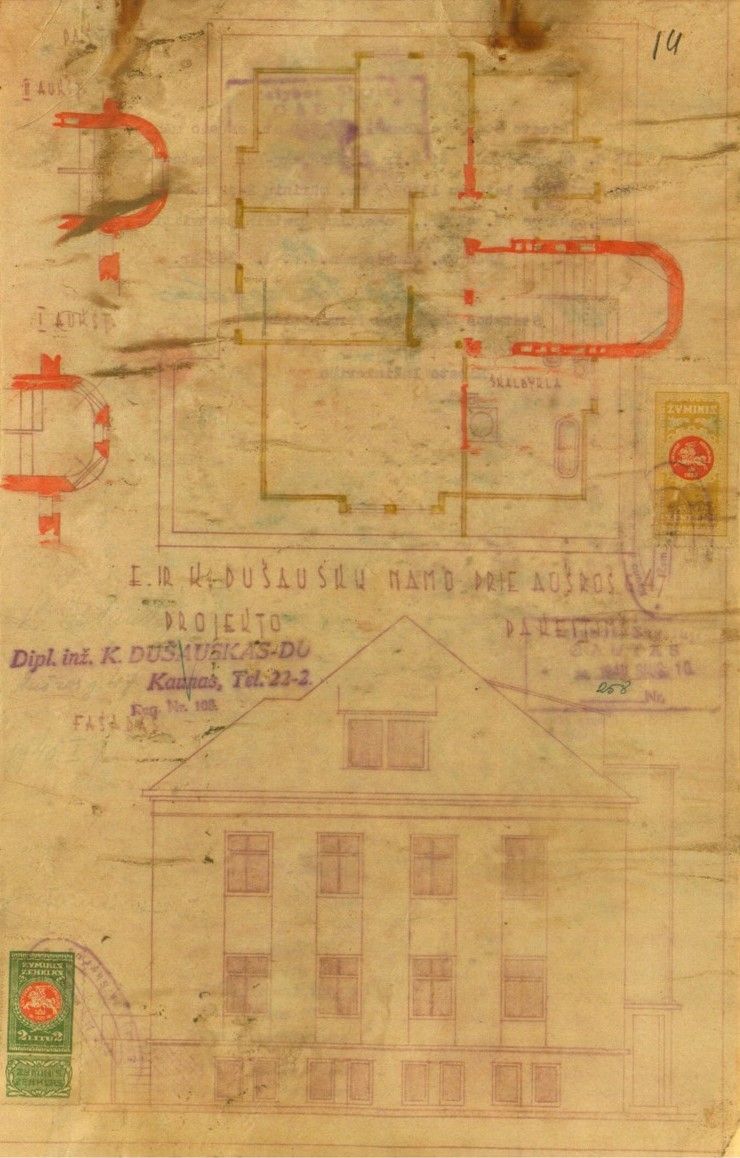
Residential house and the Consulate of the Swiss Confederation
2020 October 6
House and private hospital of O. and V. Gusevai
2020 November 30A person that linked Lithuania and Belarus during the interwar period
What is the connection between Kaunas, Belarus and the Belarusian national revival? All these things were linked by one person – architect Klaudijus Dušauskas Duž, who lived and worked in Kaunas between the wars.
Klaudijus Dušauskas was born in 1891 in Glubok, Belarus. He attended school in Vilnius, where he also got acquainted with the members of the Belarusian national movement and joined their ranks. After 1917, during the February Revolution in Russia, K. Dušauskas became a representative of the Central Council of Belarusian Organizations in St. Petersburg, cooperating with the largest Belarusian political force – the Belarusian Socialist Hramada (BSH). K. Dušauskas-Duž’s greatest merit for Belarus is the preparation of the country’s flag project: the white-red-white flag became popular among Belarusians after the February Revolution and was used by both civilian and military organizations.
A significant part of the Lithuanian biography of an architect began in 1924, when K. Dušauskas entered the Faculty of Engineering of the University of Lithuania in Kaunas.

Business card of architect K. Dušauskas-Duž. Source: Vytauto Didžiojo mirties 500 metų sukaktuvėms paminėti albumas. Kaunas, 1933 m.
K. Dušauskas graduated in 1927 and acquired the diploma of an engineer. One of the first works of K. Dušauskas – together with prof. Vladas Dubeneckis was a project for the building of the cinema “Metropolitain”.
Between 1930–1931 K. Dušauskas worked for the joint-stock company “Maistas”, where he took care of the development of infrastructure, built factories in Kaunas and other Lithuanian cities. Later, K. Dušauskas started working at the Ministry of Transport and Communications. Having held the position of the postal board’s for construction, he was designing the post offices and other buildings.
A project of the private house. Source: Kaunas County Archive, f. 218, ap. 2, b. 344, l. 14.
Author of residential houses
The design and construction of residential houses was also important part of K. Dušauskas’ architectural work. His works were designed according to the style of functionalism, most of the surviving buildings are in Žaliakalnis or in the center of Kaunas. The most valuable are the houses of Dr. Juozas Purickis and Jonas Aukštuolis (Aušros St. 1), as well as the houses of Žakevičienė (Trakų St. 8 and 10), Vladas Požela and Viktoras Rekaitis and the homestead of botanist L. Vailionis in Kaunas district. K. Dušauskas also designed his own house in Žaliakalnis.
After the occupation of Lithuania in 1940, K. Dušauskas-Duž was arrested as an active participant in the Belarusian national movement. During the Nazi occupation, he was hiding Jews in his home for several months, for which he and his wife were also arrested by the Gestapo. After the war, K. Dušauskas remained to work in Lithuania, but suffered from Soviet repressions and was imprisoned. He died in 1959 and was buried in Kaunas, Petrašiūnai cemetery.
Text by Ugnė Marija Andrijauskaitė
Photos by Ž. Rinkšelis, 2020.


